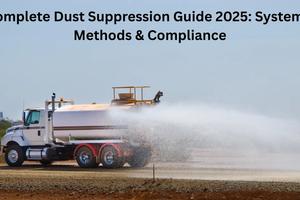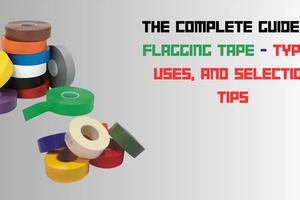Cutting Aluminum with a CNC Router – Tools Selection, Feeds, Speeds, Cooling Methods And So On

Key Takeaways
Essential insights to remember
✅ 6061-T6 aluminum is the best choice for CNC routing due to its machinability and strength.
✅ Single-flute and two-flute carbide bits work best for cutting aluminum.
✅ Proper feeds and speeds settings prevent tool breakage and ensure smooth cuts.
✅ Chip clearing and cooling are essential to avoid material sticking and overheating.
✅ Stable work holding prevents material shifting and improves precision.
Introduction
CNC routers have long been associated with woodworking and plastic fabrication, but their capability extends to machining aluminum, making them a viable alternative to traditional metal mills. While CNC routers lack the rigidity of dedicated metalworking machines, they can still deliver precise cuts with the right approach.
Unlike softer materials, aluminum presents unique challenges, such as higher cutting forces, heat buildup, and chip evacuation issues. However, with proper tool selection, optimized speeds and feeds, and effective cooling techniques, CNC routers can cut aluminum efficiently and accurately.
The choice of aluminum alloy plays a crucial role in machinability, with 6061-T6 being one of the most preferred options due to its hardness and minimal gummy residue. Selecting the right CNC router, cutting tools, and workholding strategies is also vital in achieving clean cuts without tool breakage or material warping.
Additionally, optimizing cutting strategies—such as adaptive toolpaths and climb milling—improves both surface finish and cutting efficiency. Cooling methods like air blast, misting systems, and flood coolant help in heat dissipation and chip clearance, preventing tool damage.
By understanding the technical aspects of cutting aluminum with a CNC router, users can achieve professional-grade results while extending tool life and ensuring operational safety.
Understanding Aluminum Alloys for CNC Routing
Choosing the right aluminum alloy is essential when using a CNC router. Not all aluminum grades offer the same machinability, strength, and heat resistance. Selecting an inappropriate alloy can lead to poor surface finish, excessive tool wear, and even machine damage.
Differences Between 5xxx and 6xxx Series Aluminum
Aluminum alloys are classified into different series based on their composition and properties. The most common options for CNC machining include 5xxx and 6xxx series alloys, each with unique characteristics:
5xxx Series Aluminum
- Contains magnesium as the primary alloying element.
- Known for high corrosion resistance, making it suitable for marine and outdoor applications.
- Difficult to machine due to its gummy nature, which causes tool clogging and poor chip evacuation.
- Typically used for welded structures, pressure vessels, and marine components.
6xxx Series Aluminum
- Primarily composed of magnesium and silicon, offering an excellent balance of strength and machinability.
- 6061-T6 is one of the most commonly used grades for CNC routing due to its hardness and dimensional stability.
- Easier to cut, shape, and finish compared to 5xxx series alloys.
- Ideal for precision machining, aerospace components, and automotive parts.
““Pro Tip: If possible, avoid 5xxx series aluminum for CNC routing as it tends to cause tool loading and excessive heat buildup. Instead, opt for a 6xxx series alloy, particularly 6061-T6, for a smoother cutting process.
Why 6061-T6 is the Best Choice for CNC Routing
Among all aluminum alloys, 6061-T6 is considered the gold standard for CNC machining. Its strength, machinability, and thermal stability make it the ideal choice for achieving precise cuts and clean edges.
Key Benefits of 6061-T6 for CNC Routing
✅ High Strength-to-Weight Ratio – Provides structural integrity while remaining lightweight.
✅ Excellent Machinability – Allows for faster feed rates and longer tool life.
✅ Corrosion Resistance – Ensures durability in harsh environments.
✅ Heat-Treated for Stability – Reduces the risk of warping and material distortion.
How Heat Treatment Affects Machinability
Aluminum alloys undergo heat treatment to enhance their hardness, strength, and wear resistance. This process significantly impacts how easily an alloy can be cut using a CNC router.
Rule of Thumb: Always choose T6 heat-treated aluminum for CNC machining, as it offers the best combination of hardness and machinability.
Selecting the right aluminum alloy is the first step toward successful CNC machining. 6061-T6 remains the top choice due to its superior machinability, stability, and resistance to tool wear. Avoid 5xxx series aluminum unless necessary, as its gummy texture can lead to tool clogging and heat buildup.
Choosing the Right CNC Router for Aluminum Cutting
Selecting the right CNC router for cutting aluminum is crucial for achieving precise cuts, minimizing tool wear, and ensuring process efficiency. Unlike wood or plastic, aluminum requires higher rigidity, proper spindle power, and robust construction. The wrong machine can lead to vibrations, poor surface finish, and even tool breakage.
Key Features of a Good CNC Router for Aluminum
A CNC router must possess specific characteristics to handle the challenges of aluminum machining. Below are the essential features to look for:
1. Machine Rigidity & Frame Construction
- Why It Matters: Aluminum cutting generates high cutting forces, and a rigid frame reduces vibrations, ensuring smoother cuts.
- Best Choice: CNC routers with heavy-duty aluminum or steel frames. Avoid routers with lightweight or plastic frames as they tend to flex.
2. Spindle Power & RPM Range
- Why It Matters: Aluminum requires higher RPMs and consistent torque for smooth cutting. Underpowered spindles result in poor chip evacuation and overheating.
- Best Choice: At least 1.5 kW (2 HP) spindle power with a variable speed range of 8,000 to 24,000 RPM.
3. Ball Screws vs. Lead Screws
- Why It Matters: Ball screws provide higher precision and less backlash compared to lead screws, making them better suited for metal cutting.
- Best Choice: A CNC router with ball screws on all axes for increased accuracy.
4. Tool Compatibility & Cooling System
- Why It Matters: Standard router bits wear out quickly on aluminum. The router must support specialized carbide and single-flute cutters.
- Best Choice: A CNC router that allows for mist cooling or air blast systems to keep tools cool and prevent chip buildup.
5. Workholding & Bed Type
- Why It Matters: Proper workholding prevents material shifting and vibrations, which can ruin precision.
- Best Choice: Routers with T-slot tables, vacuum beds, or robust clamping options for securing aluminum sheets.
Differences Between Budget and Professional-Grade CNC Routers
Choosing between an entry-level and a high-end CNC router depends on your machining needs, budget, and volume of work. Below is a comparison to help you decide:
Pro Tip: If you’re serious about cutting aluminum, invest in a mid-range or professional CNC router rather than struggling with a cheap hobbyist model.
Popular CNC Routers for Aluminum Cutting
If you’re looking for a proven CNC router for aluminum machining, consider these options:
1. Shapeoko 4 XL
✅ Price: $1,700 – $2,500
✅ Best For: DIYers & hobbyists
✅ Pros: Affordable, compact, easy to upgrade
❌ Cons: Not ideal for heavy-duty metal cutting
2. Inventables X-Carve Pro
✅ Price: $5,000+
✅ Best For: Small businesses & light production
✅ Pros: Rigid frame, solid spindle, good for small aluminum parts
❌ Cons: Limited for high-volume machining
3. Avid CNC PRO Series
✅ Price: $6,000 – $12,000
✅ Best For: Professionals & high-precision aluminum cutting
✅ Pros: Ball screws, high spindle power, industrial-grade performance
❌ Cons: Expensive, requires additional setup
4. Tormach 24R CNC Router
✅ Price: $15,000+
✅ Best For: Production & professional aluminum machining
✅ Pros: Robust, high-torque spindle, mist cooling support
❌ Cons: Requires a dedicated workspace & advanced setup
Final Thoughts
Selecting the right CNC router for aluminum cutting directly impacts performance, precision, and efficiency. A budget CNC router may work for light aluminum engraving, but serious machining requires a rigid, high-power machine with proper cooling and chip management systems.
Essential Cutting Tools & Bits for Aluminum CNC Routing
Selecting the right cutting tools for aluminum machining is critical for achieving clean cuts, maximizing tool life, and preventing tool breakage. Unlike wood or plastic, aluminum requires specialized end mills that handle heat buildup, chip evacuation, and cutting forces effectively.
Best Types of Bits for Cutting Aluminum
Using the wrong router bit can result in poor surface finish, excessive heat generation, and rapid tool wear. Here are the best cutting tools for aluminum:
1. Single-Flute End Mills
✅ Best for: High-speed CNC routers
✅ Why?: Maximizes chip evacuation, reduces clogging, and prevents heat buildup
✅ Ideal for: Thin aluminum sheets, high-speed cuts
2. Two-Flute Carbide End Mills
✅ Best for: General-purpose aluminum machining
✅ Why?: Balances chip removal and cutting stability
✅ Ideal for: Moderate-depth aluminum cuts
3. Three-Flute End Mills
✅ Best for: Finishing passes
✅ Why?: Provides smoother surface finishes
✅ Ideal for: Precision machining & detailed engraving
4. Aluminum-Specific Spiral O-Flute Bits
✅ Best for: High-speed cutting with less tool wear
✅ Why?: Designed to prevent aluminum adhesion on cutting edges
✅ Ideal for: Longer tool life & high-quality finish
““Pro Tip: Avoid four-flute or multi-flute bits for aluminum, as they cause poor chip evacuation, overheating, and increased tool wear.
Why Two-Flute and Single-Flute Bits Work Best
Aluminum is a soft yet sticky material, meaning it adheres to cutting tools if not cleared efficiently. This is why single-flute and two-flute end mills are preferred over multi-flute tools.
““Rule of Thumb: Use single-flute cutters for high-speed, aggressive cuts and two-flute bits for balanced performance.
Coatings That Improve Tool Longevity and Performance
Using coated end mills enhances tool life, reduces heat buildup, and prevents aluminum from sticking to the cutter.
Best Coatings for CNC Router Bits When Cutting Aluminum
- ZrN (Zirconium Nitride) – Best for reducing aluminum adhesion
- TiB2 (Titanium Diboride) – Ideal for high-speed machining
- DLC (Diamond-Like Carbon) – Longest-lasting coating for industrial-grade aluminum cutting
Final Thoughts
Using the right CNC router bit makes a huge difference when cutting aluminum. Single-flute and two-flute carbide bits provide the best balance of performance, chip removal, and durability. Additionally, using coated tools significantly enhances cutting efficiency and tool longevity.
Optimizing Feeds and Speeds for Cutting Aluminum
Achieving the perfect feeds and speeds when cutting aluminum with a CNC router is critical for preventing tool breakage, reducing heat buildup, and improving surface finish. Unlike wood or plastic, aluminum has a narrow sweet spot where it cuts cleanly without causing excessive tool wear or melting onto the bit.
Understanding Chip Load, RPM, and Feed Rate Calculations
To optimize feeds and speeds, you must understand three key parameters:
1. Chip Load (CPT - Chip Per Tooth)
Chip load refers to how much material each flute removes per revolution. If the chip load is too low, the tool rubs instead of cutting, causing heat buildup. If it’s too high, the tool overloads and breaks.
Formula:

2. RPM (Revolutions Per Minute)
The spindle speed (RPM) determines how fast the cutting bit rotates. Higher RPMs allow for cleaner cuts but may generate excessive heat if not paired with the correct feed rate.
Formula:

3. Feed Rate (IPM - Inches Per Minute)
Feed rate is the speed at which the cutting tool moves through the aluminum. Setting it too high can cause deflection, while setting it too low can cause excess heat and tool wear.
Formula:

Common Mistakes When Setting Feeds and Speeds
Many beginners make errors when configuring their CNC routers for cutting aluminum. Here are the most common mistakes and how to avoid them:
How to Find the Perfect Balance for Optimal Cuts
To determine the ideal feeds and speeds, follow these guidelines:
1. Recommended Cutting Parameters for CNC Aluminum Routing
2. Adjusting for Your Specific CNC Router
Every CNC router performs differently, so you may need to adjust your feeds and speeds slightly based on spindle power, machine rigidity, and material thickness.
- If you hear excessive chatter → Reduce feed rate or increase spindle speed.
- If aluminum starts sticking to the tool → Increase chip load and ensure proper cooling.
- If the surface finish is rough → Lower the cutting depth and use a finishing pass.
““Pro Tip: Always start with conservative feed rates and increase speed gradually until you achieve the best results.
Final Thoughts
Setting the correct feeds and speeds is one of the most important aspects of CNC aluminum machining. Using the right chip load, feed rate, and spindle speed will ensure cleaner cuts, longer tool life, and minimal heat buildup. Always test on scrap material before running final cuts to dial in the perfect settings.
Effective Workholding and Fixturing for Aluminum CNC Machining
Proper workholding and fixturing are essential when cutting aluminum with a CNC router. Unlike wood or plastic, aluminum is denser and heavier, requiring a secure setup to prevent shifting, vibrations, and inaccuracies. Without proper fixturing, poor surface finishes, misaligned cuts, and tool breakage are common issues.
Methods to Securely Hold Aluminum Sheets and Plates
There are several reliable methods for securing aluminum workpieces during CNC machining. The best approach depends on material thickness, router capabilities, and part complexity.
1. T-Slot Clamps & Fixtures
✅ Best for: Thicker aluminum plates & precision machining
✅ Why?: Provides a rigid hold and prevents material movement.
✅ How?: Secures aluminum using adjustable clamps on a T-slot table.
❌ Limitations: Not ideal for thin aluminum sheets, which can warp.
2. Vacuum Tables
✅ Best for: Thin aluminum sheets & large surface areas
✅ Why?: Holds material without physical clamps, preventing obstruction.
✅ How?: Uses negative air pressure to suction aluminum onto the CNC bed.
❌ Limitations: Requires a powerful vacuum pump to prevent slippage.
3. Double-Sided Tape & Adhesives
✅ Best for: Engraving, lightweight aluminum parts & small jobs
✅ Why?: Quick and easy to set up with minimal equipment.
✅ How?: Attaches the aluminum sheet directly to the CNC table with strong tape.
❌ Limitations: Not suitable for deep cuts or high-speed milling, as the material may shift.
4. Screws & Bolts (Mechanical Fastening)
✅ Best for: Heavy-duty aluminum cutting
✅ Why?: Provides extreme stability for high-speed operations.
✅ How?: Secures aluminum to a sacrificial MDF spoilboard by screwing directly through the material.
❌ Limitations: Requires careful hole placement to avoid interfering with toolpaths.
““Pro Tip: If using T-slot clamps or screws, always place them outside the cutting area to prevent tool crashes.
Vacuum Tables vs. Clamps: Pros and Cons
Choosing between vacuum tables and mechanical clamps depends on your CNC machine, workpiece size, and machining complexity.
Tips to Prevent Material Warping and Movement
Aluminum sheets, especially thin stock, are prone to warping when machined. To prevent this:
- Use a Spoilboard – Placing a sacrificial MDF board beneath aluminum helps absorb vibrations and prevents table damage.
- Reduce Clamping Pressure – Over-tightening can bend thin aluminum sheets. Apply even pressure instead.
- Use a Bracing Strategy – Secure multiple points along the aluminum’s surface to prevent lifting during cutting.
- Control Heat Buildup – Excess heat can cause aluminum to expand and distort. Implement air cooling or misting systems.
Final Thoughts
A secure workholding system is crucial for accurate CNC aluminum machining. Whether using vacuum tables, clamps, tape, or screws, the goal is to minimize movement, reduce vibrations, and ensure clean cuts. Thicker plates benefit from mechanical fasteners, while thin sheets perform better with vacuum holding or tape.
Chip Clearing and Cooling Methods
Efficient chip evacuation and cooling are essential when cutting aluminum with a CNC router. Unlike wood or plastic, aluminum does not produce dust, but rather solid chips that must be cleared to prevent recutting, tool clogging, and overheating. Failing to clear chips or manage heat properly can result in poor surface finishes, tool breakage, and even machine failure.
Why Proper Chip Removal is Crucial for Aluminum Cutting
Aluminum’s thermal conductivity and malleability make it more prone to heat buildup and chip adhesion. If chips are not cleared from the cutting area, they can:
✅ Re-weld onto the tool – Resulting in poor cuts and shortened tool life.
✅ Increase cutting resistance – Causing chatter, vibrations, and tool deflection.
✅ Lead to tool breakage – As trapped chips grind against the tool, increasing wear.
✅ Reduce overall precision – Aluminum chips can interfere with the cutting path, affecting accuracy.
““Pro Tip: Always ensure proper chip evacuation by selecting the right cooling and air-blast system.
Comparing Air Blast, Misting Systems, and Flood Coolant
There are multiple ways to manage heat buildup and chip evacuation in aluminum CNC machining. Choosing the best method depends on cutting speed, machine capabilities, and budget.
1. Air Blast Systems
✅ Best for: Light to moderate aluminum cutting
✅ Why?: Clears chips without excessive mess
✅ How?: Uses compressed air to blow chips away from the cutting area
❌ Limitations: Does not cool the cutting tool significantly
2. Misting Systems (Minimum Quantity Lubrication - MQL)
✅ Best for: General aluminum machining
✅ Why?: Provides both lubrication and chip clearing
✅ How?: Sprays a fine mist of coolant and compressed air
❌ Limitations: Requires regular refilling of lubricant reservoirs
3. Flood Coolant
✅ Best for: High-speed, heavy-duty CNC aluminum machining
✅ Why?: Maximizes heat dissipation and chip removal
✅ How?: Pumps a continuous stream of coolant over the cutting area
❌ Limitations: Can be messy, requiring a drainage and filtration system
Best Coolant Solutions for CNC Aluminum Machining
Selecting the right coolant enhances cutting performance and tool longevity. The table below compares common options:
““Rule of Thumb: Use compressed air for light work, misting for general applications, and flood coolant for heavy machining.
Additional Tips for Chip Management and Cooling
🔹 Use an Upcut End Mill – Upcut tools naturally pull chips away from the cutting area, improving chip evacuation.
🔹 Increase Airflow in the Workspace – Helps dissipate heat and prevents chips from accumulating on the CNC table.
🔹 Optimize Feeds & Speeds – Running too slow generates excess heat, while running too fast creates excessive chip load.
🔹 Consider a Chip Vacuum System – Automated chip collection keeps the cutting area clean for better precision.
““Pro Tip: If using a misting system, ensure the lubricant is aluminum-compatible to prevent contamination and sticky residue.
Final Thoughts
Proper chip clearing and cooling is non-negotiable when cutting aluminum with a CNC router. The right air blast, misting, or coolant system will extend tool life, prevent heat buildup, and improve cut quality. For most setups, a misting system provides the best balance of cooling and chip evacuation.
Cutting Strategies to Improve Accuracy and Finish
Achieving a smooth, precise cut when machining aluminum on a CNC router requires more than just the right tools and feeds & speeds. Using the correct cutting strategies helps reduce tool deflection, minimize surface imperfections, and prevent material distortion.
Roughing vs. Finishing Strategies for Aluminum
A two-step machining approach—roughing followed by finishing—is essential for high-precision aluminum cuts.
1. Roughing Cuts (Material Removal Phase)
✅ Purpose: Quickly remove bulk material without prioritizing surface finish.
✅ Best Strategy: Use adaptive toolpaths to maintain consistent chip loads and avoid tool overload.
✅ Depth of Cut: 30-50% of tool diameter (for aggressive material removal).
✅ Feed Rate: High feed rates with single or two-flute end mills to clear chips efficiently.
2. Finishing Cuts (Surface Perfection Phase)
✅ Purpose: Improve dimensional accuracy and surface finish.
✅ Best Strategy: Use a shallow depth of cut (~5-10% of tool diameter) to minimize deflection and tool marks.
✅ Feed Rate: Lower feed rates ensure cleaner edges and minimal burrs.
✅ Tool Choice: Switch to a three-flute or high-polish end mill for a smoother finish.
““Pro Tip: Always leave a small stock allowance (~0.01"-0.02") in the roughing pass to be cleaned up by the finishing pass.
Why Adaptive Toolpaths and Climb Milling Work Best
Traditional cutting paths create uneven chip loads, leading to inconsistent surface finishes and tool wear. Modern CAM software offers adaptive toolpath strategies that maintain steady cutting engagement for better accuracy.
1. Adaptive Toolpaths (Constant Engagement Cutting)
✅ Why?: Keeps chip loads consistent, preventing sudden tool pressure changes.
✅ Best For: Pocketing, contouring, and deep cuts in aluminum.
✅ Benefit: Reduces tool wear and deflection, ensuring smoother finishes.
2. Climb Milling vs. Conventional Milling
✅ Climb Milling: The cutter moves with the feed direction, producing better surface finishes and reduced tool wear.
❌ Conventional Milling: The cutter moves against the feed direction, causing more friction, tool wear, and rough finishes.
““Rule of Thumb: Always use climb milling for aluminum to achieve a smoother cut with less heat buildup.
How Pre-Finishing Reduces Tool Deflection and Surface Imperfections
When using a ball-end mill or a tapered cutter, pre-finishing ensures a consistent depth of cut in the final pass.
Benefits of Pre-Finishing Before the Final Pass
✅ Minimizes Tool Deflection – Reduces chatter and vibration in finishing cuts.
✅ Eliminates Roughing Marks – Removes tool path remnants for cleaner finishes.
✅ Prepares a Uniform Surface – Ensures even tool engagement in the final pass.
““Pro Tip: Set up a pre-finishing toolpath to leave 0.02"-0.04" of stock, then perform the final finishing pass with a lower feed rate and higher spindle speed.
Final Thoughts
Using optimized cutting strategies dramatically improves accuracy, surface finish, and tool longevity when machining aluminum. The key takeaways:
✅ Use a two-step approach: Roughing for fast material removal, finishing for precision.
✅ Implement adaptive toolpaths: Keeps cutting forces even and prevents sudden tool pressure spikes.
✅ Always use climb milling: Produces better surface finishes and reduces tool wear.
✅ Pre-finishing ensures uniformity: Removes inconsistencies before the final pass.
Common Mistakes and How to Avoid Them
Even experienced machinists can make errors when cutting aluminum with a CNC router. These mistakes can lead to poor surface finishes, excessive tool wear, machine damage, and even safety hazards. Understanding these common pitfalls and how to avoid them ensures efficient, high-quality machining.
1. Incorrect Tool Selection and Its Impact on Cutting Quality
Using the wrong end mill or bit type can reduce cutting efficiency, increase heat buildup, and cause tool breakage.
Common Mistakes in Tool Selection
❌ Using High-Flute Count End Mills – Poor chip evacuation leads to clogging and overheating.
❌ Using Dull or Cheap Bits – Worn-out tools cause rough finishes and chatter.
❌ Selecting Wrong Coatings – Non-optimized coatings (e.g., TiN instead of ZrN) lead to chip adhesion and material welding.
Solution
✅ Use single-flute or two-flute carbide end mills for optimal chip evacuation.
✅ Choose ZrN (Zirconium Nitride) coated tools to prevent aluminum from sticking.
✅ Regularly inspect and replace worn-out bits to maintain precision cutting.
2. Overloading the Spindle and Cutting Too Aggressively
Many users try to increase material removal rates by using aggressive depth and feed settings, which leads to:
❌ Spindle Overload – Causes machine strain and tool deflection.
❌ Tool Breakage – Excessive force leads to bit snapping.
❌ Burn Marks on Aluminum – High friction creates excessive heat buildup.
Solution
✅ Follow recommended chip load guidelines to balance speed and depth of cut.
✅ Use adaptive toolpaths instead of straight plunging, which reduces tool stress.
✅ Keep depth of cut at 30-50% of tool diameter during roughing passes.
3. Not Clearing Chips Properly, Leading to Tool Breakage
If aluminum chips are not cleared from the cutting path, they clog the flutes, increase heat, and degrade tool life.
Common Chip Clearing Issues
❌ No Air Blast or Misting System – Chips accumulate and re-cut, damaging the tool.
❌ Low Feed Rates – Causes chips to stick, leading to built-up edge (BUE) formation.
❌ Multi-Flute Tools in Shallow Cuts – Traps chips instead of ejecting them.
Solution
✅ Use an air blast system or mist cooling to remove chips continuously.
✅ Increase feed rates slightly to prevent chips from welding onto the bit.
✅ Use single-flute or two-flute bits, which allow better chip clearance.
4. Running at Incorrect Feeds and Speeds
Setting feeds and speeds incorrectly can cause:
❌ Too Slow Feeds – Leads to rubbing instead of cutting, causing tool overheating.
❌ Too High RPMs – Increases heat generation, leading to built-up edge on the tool.
❌ Inconsistent Chip Load – Results in chatter and poor surface finish.
Solution
✅ Follow recommended feeds & speeds for aluminum, typically:
✅ Ensure chip load stays within 0.002"-0.004" per tooth for best results.
✅ Use lower spindle speeds (10,000-14,000 RPM) for deeper cuts to reduce heat buildup.
5. Improper Workholding Causing Material Shift
If aluminum is not secured properly, it can move mid-cut, leading to:
❌ Ruined parts due to misalignment.
❌ Chattering and vibrations, affecting accuracy.
❌ Material warping, especially for thin sheets.
Solution
✅ Use T-slot clamps or vacuum tables for secure workholding.
✅ Apply double-sided tape for thin aluminum sheets.
✅ If using screws or bolts, ensure they don’t interfere with toolpaths.
Final Thoughts
Avoiding these common CNC aluminum cutting mistakes ensures better surface finishes, longer tool life, and more efficient machining. The key takeaways:
✅ Choose the right tool: Use single-flute or two-flute carbide bits.
✅ Run proper feeds & speeds: Keep chip load within optimal range.
✅ Ensure proper chip clearing: Use air blast or mist cooling.
✅ Secure material effectively: Use clamps, vacuum tables, or tape to prevent shifting.
Conclusion
Cutting aluminum with a CNC router requires a well-optimized approach to achieve precision, efficiency, and high-quality results. Unlike wood or plastic, aluminum presents unique challenges, such as chip buildup, heat generation, and tool wear, making it essential to use the right tools, cutting strategies, and machine settings.
Key Takeaways for CNC Aluminum Machining
✅ Choose the Right Aluminum Alloy: 6061-T6 is the best choice due to its machinability, strength, and stability. Avoid 5xxx series aluminum, as it is too gummy and prone to clogging tools.
✅ Use the Correct CNC Router & Tools: A rigid CNC router with at least 1.5 kW spindle power, ball screws, and a T-slot or vacuum table is best. Single-flute or two-flute carbide bits work best for efficient chip evacuation.
✅ Optimize Feeds and Speeds: Maintain proper chip load to avoid tool rubbing or breakage. Lower spindle speeds (10,000-16,000 RPM) and higher feed rates prevent overheating.
✅ Implement Effective Workholding: Secure aluminum using T-slot clamps, vacuum tables, or double-sided tape. This prevents material shifting, warping, and misalignment.
✅ Use Proper Chip Clearing and Cooling: An air blast or misting system ensures chips are removed continuously, preventing chip welding and tool wear.
✅ Follow Correct Cutting Strategies: Use adaptive toolpaths, climb milling, and pre-finishing passes to achieve smooth surface finishes and extend tool life. Or, you can contact Tailor Made for better solution.
✅ Avoid Common Mistakes: Incorrect tool selection, aggressive cuts, poor chip evacuation, and improper fixturing can ruin a job. Follow best practices to ensure successful aluminum machining.
““Pro Tip: The key to cutting aluminum efficiently with a CNC router is finding the right balance between tool speed, chip load, cooling, and workholding.
By implementing these best practices, even a hobbyist-grade CNC router can produce high-quality aluminum parts with accuracy and repeatability.






